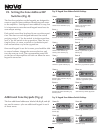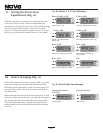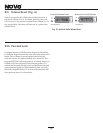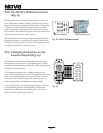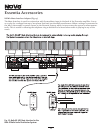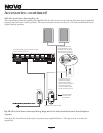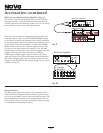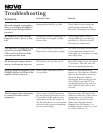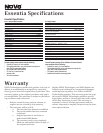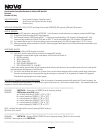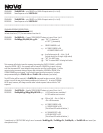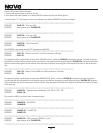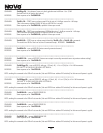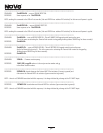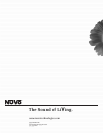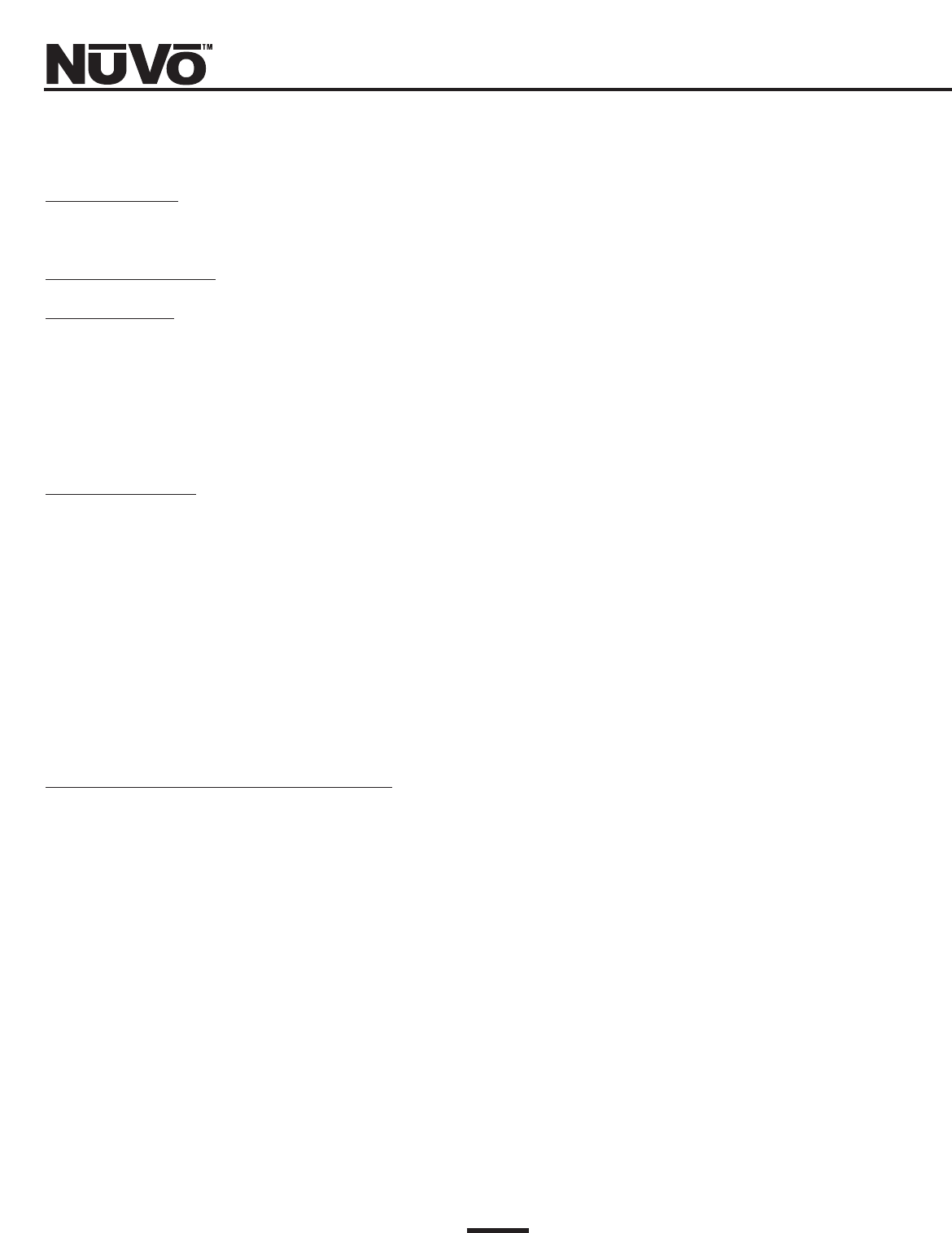
Control Interface Description Document for the Nuvo E6D Main Unit
Revision B
November 26, 2003
DB9M POR
T PINOUTS:
Nuvo Transmit to System Controller on pin 2.
Nuvo Receive from System Controller on pin 3.
Ground on pin 5.
SERIAL POR
T PARAMETERS: RS232, RTS/CTS or software flow control (XON/XOFF) NOT required, 9600 baud, 8N1 protocol.
RULES OF PRO
TOCOL:
(1) For alpha ASCII characters, always use UPPER CASE. In this document, actual characters in a string are presented in BOLD type.
(2) All numerical fields are coded as ASCII digit characters.
(3) Each Command string is STARTED with an ASCII "*" character and terminated by a <CR> character (0D hexadecimal). Each
response string issued by the E6D will START with an ASCII "#" and be terminated with a <CR> character (0D hexadecimal).
(4) If a command has an error in it (does not adhere to exact command syntax), the E6D will respond with a "#?<CR>" string.
(5) Whenever queuing multiple commands to the E6D, the host program should pause for 50 milliseconds between commands to pre-
vent buffer overruns.
NUVO POWER-ON S
TATE:
(1) Each zone is OFF until ON command is received.
(2) Each zone’s ZoneSet status will be as set by the local keypad DIP switches
If no keypad is connected with a given zone address, then ZoneSet will default to:
A. OR0 (No override)
B. BASS+0 (Bass FLAT)
C. TREB+0 (Treble FLAT)
D. GRP0 (SOURCE GROUPING OFF)
E. VRST1 (VOLUME RESET TO –50 dB ON)
If these zone settings are overridden by the commands which follow in this document, the overridden values will reset to the default
values above upon cycling power on the Main Unit.
(3) For the first four seconds after power-on, a series of non-control related characters will be issued at a wide range of baud rates.
These are necessary queries to a program that may be running on a connected PC for the purpose of firmware field upgrades.
They should be ignored by the host control system.
NON-VOLA
TILE COMMANDS AND ASSOCIATED RESPONSE: With the exception of commands associated with setting the IR carrier frequency, the
effect of all commands is non-permanent; i.e. when power is cycled on the main unit, it will return to default values. The commands that are an
exception to this rule follow in this section.
*********************************************************************************
COMMAND: *IRSETSR<CR> – Reads status of SOURCE IR carrier frequency settings.
RESPONSE: #IRSET:aa,bb,cc,dd,ee,ff<CR> where:
aa = IR carrier frequency of SOURCE 1 ("38" or "56")
bb = carrier frequency of SOURCE 2 ("38" or "56")
cc = carrier frequency of SOURCE 3 ("38" or "56")
dd = carrier frequency of SOURCE 4 ("38" or "56")
ee = carrier frequency of SOURCE 5 ("38" or "56")
ff = carrier frequency of SOURCE 6 ("38" or "56")
NOTE – the Main Unit ships with the carrier frequency DEFAULT setting of
38 KHz for all six sources.
*********************************************************************************
COMMAND: *IRSETDF<CR> – Restores DEFAULT SOURCE IR carrier frequency settings (38 KHz for all six sources).
RESPONSE: Same response as for #IRSETSR<CR>
*********************************************************************************
26



